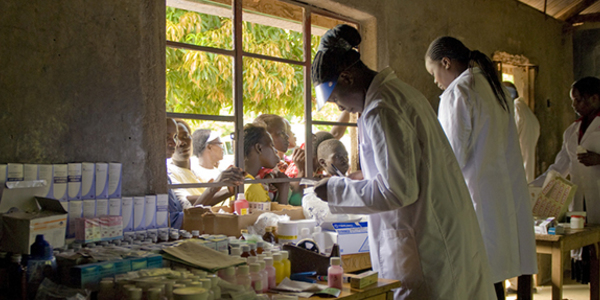Ethiopia is offering tax-free loans for up to five years, along with 100 percent exemption on customs duty for imports on capital goods, to encourage local pharmaceutical production. It’s also offering a five-year income tax exemption for manufacturers that export 50 percent of their products or supply 75 percent of their products or services as production or services input, and has reduced the time for production registration to one month for local manufacturers.
All of this is part of the government’s drive – and much of the continent’s, for that matter – to reduce the cost of drugs, reduce the importation and casualties of “spurious” drugs, increase job opportunities, improve economic growth and enhance foreign exchange inflow.
Ethiopia currently relies heavily on pharmaceutical imports (accounting for about 80 percent of the market) and on products made by international manufacturers with a footprint in the country to meet a growing consumer demand for medicine. Aditi Bhalla, industry analyst for transformational health at market researchers Frost & Sullivan, says the country has an increasing requirement of antibiotics and anti-infective drugs, given its high incidence of communicable diseases and ever-growing population.
On the whole, Africa may be the only pharmaceutical market where genuinely high growth is still achievable, says McKinsey & Co., driven by rapidly growing urban populations, increasing efficiencies in healthcare, and a more supportive business environment – as seen in Ethiopia. In a related development, the continent is becoming a hub of medical innovation.
McKinsey notes that the value of the continent’s pharmaceutical industry jumped to $20.8 billion in 2013 from just $4.7 billion a decade earlier, and predicts the market will be worth $40 billion to $65 billion by 2020, with a compound annual growth rate of 9.8 percent. Specifically, the firm says, between 2013 and 2020 prescription drugs will grow at a compound annual rate of 6 percent, generics at 9 percent, over-the-counter medicines at 6 percent, and medical devices at 11 percent.
Ethiopia alone will see revenues of $1.01 billion in 2020, up from $620 million in 2015,
Frost & Sullivan estimates in a new analysis of that country’s pharmaceutical market covering generic and branded prescription medicines as well as non-prescription/OTC medicines.
“In recent years, Ethiopia has increased its healthcare investments, resulting in a remarkable improvement in health indicators and achievement of health-related Millennium Development Goals,” observes Bhalla. “By delivering a host of incentives, the government is addressing the needs of citizens, as well as encouraging trade across borders to bring in foreign exchange.”
In addition to the Growth and Transformational Plans and Health Sector Development Plan to improve the quality of healthcare, Ethiopia, with assistance from the World Health Organization, launched a 10-year (2015-2025) National Strategy and Plan of Action for Pharmaceutical Manufacturing Development. Beyond strengthening the national medicine regulatory system and improving public access to locally produced quality medicines, Ethiopian health officials expect the action plan to foster research and development that would contribute to the country’s growing knowledge economy.
Revving up local production of pharmaceuticals is good news for multinational pharmaceutical companies on the hunt for new sources of growth as developed markets stagnate, McKinsey says. It’s also good news local companies, as well as patients, who have gained access to previously unavailable medicines.
According to Frost & Sullivan, three key players bear watching under Ethiopia’s local-production drive: British manufacturer GlaxoSmithKline Plc., a 30-year veteran in Ethiopia, already is partnering with Addis Ababa University to set up a local pharmaceutical plant in the hope of positioning the country as a pharmaceutical hub for East Africa; India’s Cadila Pharmaceuticals Ltd., currently operates a manufacturing plant in Ethiopia through its joint venture with local drug importer Almeta Impex; and UAE giant Julphar, which established a GMP (good manufacturing practice) -certified plant in association with Ethiopian importer Medtech and plans to build another to produce injectable medicine.
As promising as Africa’s pharmaceutical growth potential may be continent-wide, however, it would behoove companies to understand the uniqueness of each country’s market – from its segmentation and key drivers to its restraints and likely challenges – before they invest.













